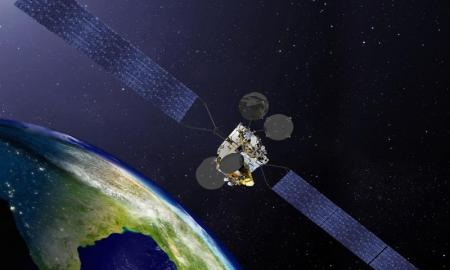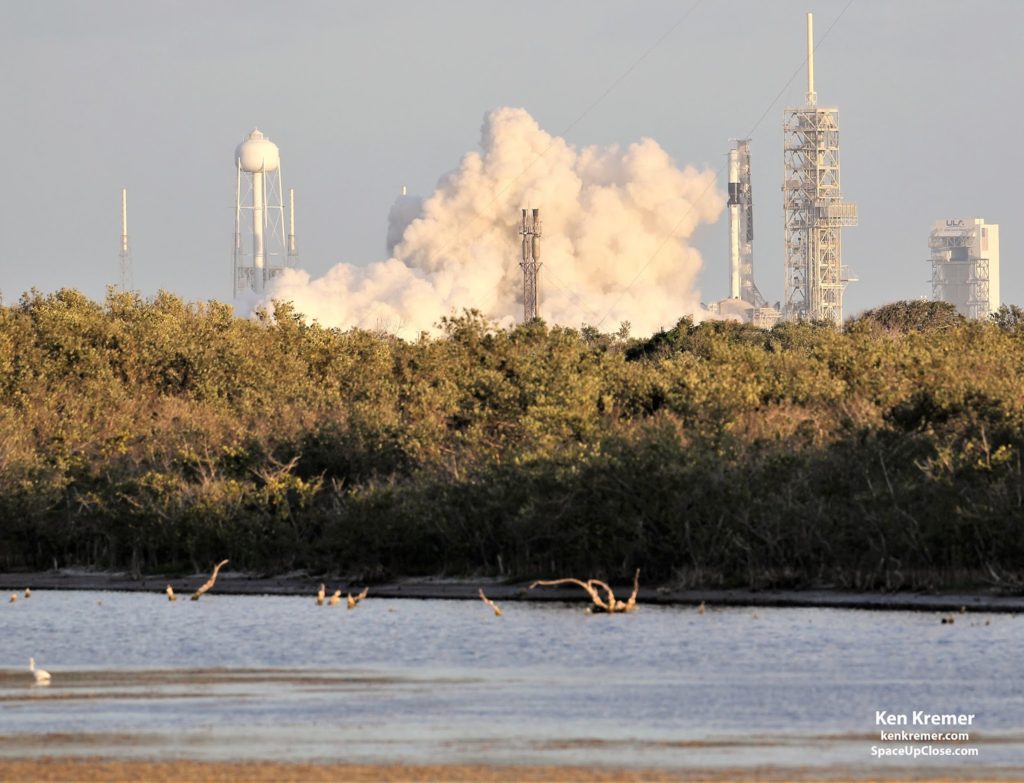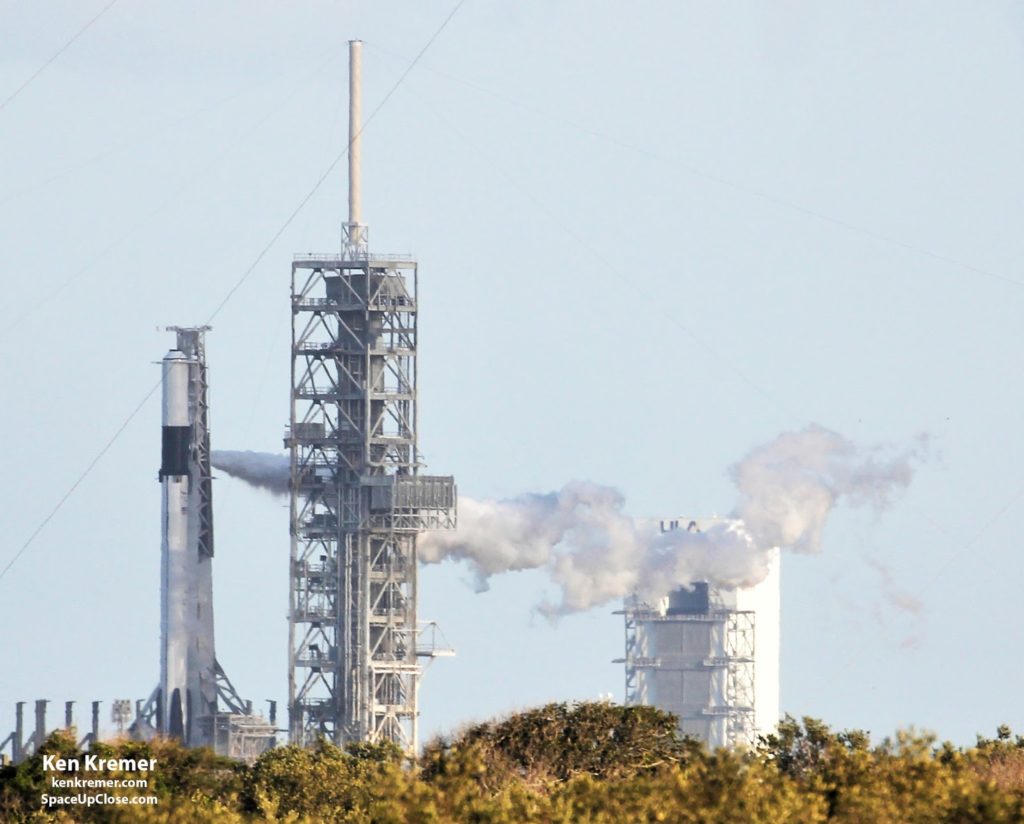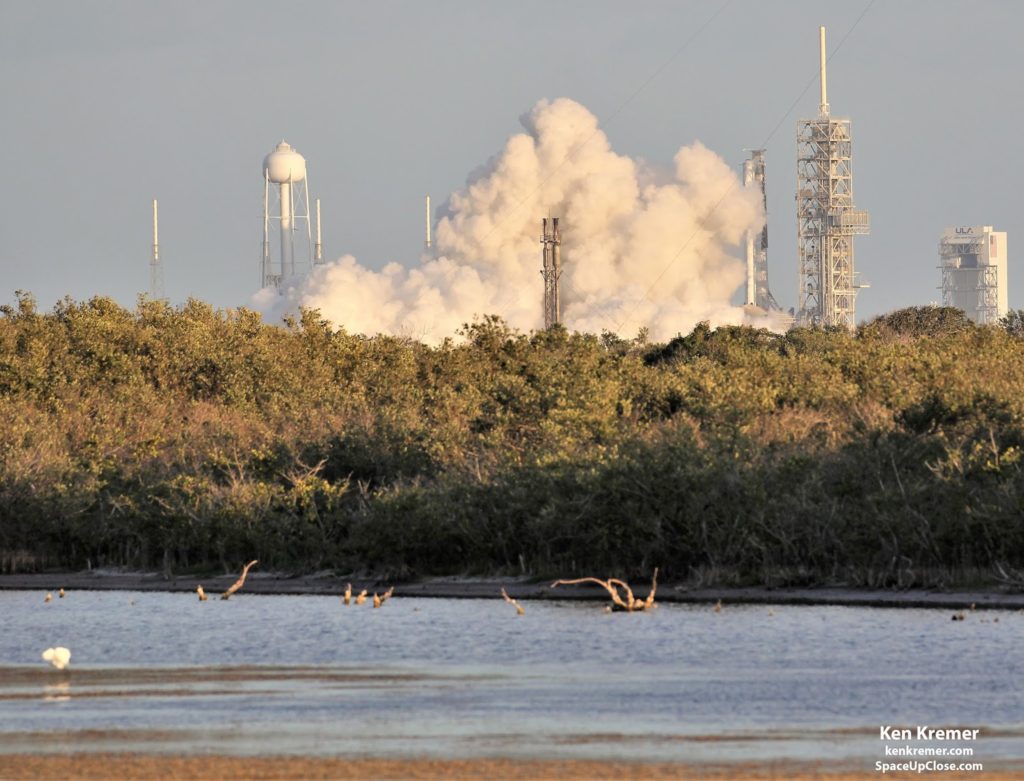— SpaceUpClose.com — 7 May 2018
– Following last weeks hold down static
hot fire test of the first upgraded Block 5 version of their Falcon 9 booster,
SpaceX is now targeting a May 10 blastoff of the rocket carrying the Bangabandhu-1 satellite to geostationary orbit from
the Florida Space Coast.
slated for May 10 from seaside Launch Complex 39A at NASA’s Kennedy Space
Center (KSC) in Florida following a review of
the engine test data by SpaceX engineers.
May 10 launch date in a tweet posted on May 7- three days after engineers
completed the brief, approximately three second long engine test at sunset on May
4 – witnessed by Space UpClose.
Falcon 9 Block 5 launch of Bangabandhu Satellite-1 on May 10 from Pad 39A in
Florida,” SpaceX tweeted.
over two hours; opening at 4:12 p.m. EDT (2012 GMT) and closing at 6:22 p.m. EDT (2222 GMT).
SpaceX will attempt to recover the first stage booster on the
OCISLY droneship prepositioned at sea in the Atlantic Ocean some 400 miles (600
km) off the east coast of Florida.
such a satellite.
 |
|
Artists concept of Bangabandhu-1 communications satellite.
Credit: Thales Alenia Space |
the Nation, Bangabandhu Sheikh Mujibur Rahman.
The 3.7-ton satellite was built by prime contractor Thales Alenia Space, a
satellite manufacturing company based in France in
their Cannes facility for the governmental Bangladesh Telecommunication Regulatory
Commission (BTRC).
arrived by plane at Cape Canaveral on March 30 for processing by SpaceX.
Bangabandhu1 is equipped with fitted with 26 Ku-Band and
14 C-Band transponders. The satellite’s coverage zone encompasses Bangladesh
and the surrounding region. This system will offer capacity in Ku-Band over
Bangladesh and its territorial waters of the Bay of Bengal, India, Nepal,
Bhutan, Sri Lanka, Philippines and Indonesia; it will also provide capacity in
C-Band over the whole region.
extremely great importance and significance to NASA because the Block 5 Falcon
9 will be used by SpaceX to launch American astronauts back to space and the
International Space Station (ISS) from American soil and thereby end our 100%
dependence on the Russian Soyuz for seats to orbit and back.
on the upgraded Falcon 9 – which is also the final upgrade for this rocket,
according to SpaceX CEO Elon Musk and VP Hans Koenigsmann. The upgrades
increase the reliability and reusability of the Falcon 9 including faster
turnaround with less maintenance and fewer refurbishments.
today by the U.S. Air Force’s 45th Weather Squadron indicates an 80% chance of favorable weather conditions at launch time.
favorable weather conditions at launch time. The primary concern remains for the
Thick Cloud Layer Rule.
the Bangabandhu-1 payload encapsulated inside the nose cone will be rolled back
out to pad 39A soon.
hand to witness the critical static fire test from an excellent vantage point
only few miles away – out on the causeway leading out to Playalinda Beach.
herein.
on the first two stages but minus the payload to keep it safe in case of a
mishap as occurred during the Amos-6 explosion in September 10.
The high stakes
engine test on the fully fueled SpaceX Falcon 9 booster took place at
approximately 7:25 p.m. EDT May 4 with the sudden ignition of all nine Merlin
1D engines bolted onto the base of the first stage for about three seconds
while raised erect atop Launch Complex 39A at KSC.
Rocket Test Fire on 39A. Credit: Jeff Seibert
ULA, Boeing, Lockheed Martin, Orbital ATK and more space and mission
reports direct from the Kennedy Space Center, Cape Canaveral Air Force Station,
Florida and Wallops Flight Facility, Virginia.
Earth and Planetary science and human spaceflight news: www.kenkremer.com –www.spaceupclose.com –
twitter @ken_kremer – ken
at kenkremer.com




